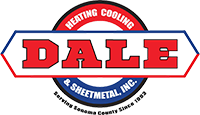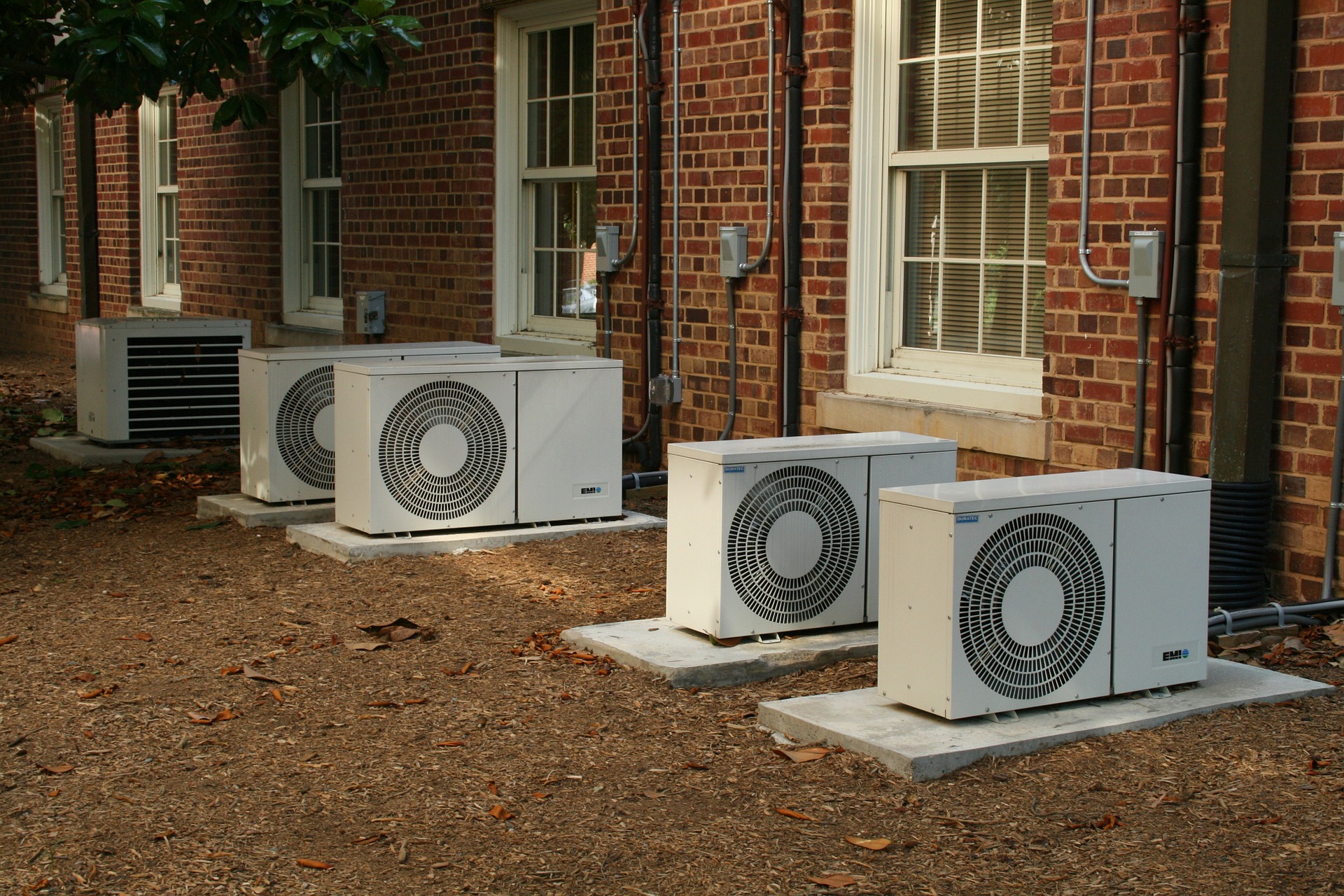Updated: June 26, 2025
As your neighbors in Sonoma County, we’ve heard just about every air conditioning myth in the book. From misconceptions about how to save energy to confusion about how your HVAC system actually works, these myths can lead to higher utility bills, unnecessary wear on your system, and uncomfortable home temperatures.
With Santa Rosa’s varied climate—from our warm summers to cool evenings—understanding the truth about your air conditioning system is essential for maintaining comfortable, efficient home temperatures.
| Common A/C Myth | Key Facts |
|---|---|
| Bigger A/C units are always better | Properly sized units offer better efficiency and humidity control |
| Setting thermostat lower cools faster | A/C units cool at the same rate regardless of temperature setting |
| Closing vents saves energy | Creates pressure imbalances and can damage your system |
| Fans cool rooms when you’re away | Fans cool people through evaporation, not rooms themselves |
| Maintenance is only needed when problems occur | Regular maintenance prevents costly repairs and extends system life |
The Most Persistent Air Conditioning Myths
Myth #1: Bigger Air Conditioning Units Are Always Better
One of the most common misconceptions we encounter in Sonoma County is that bigger is better when it comes to air conditioning units. Many homeowners believe that purchasing an oversized unit will cool their home more effectively or efficiently. In reality, an air conditioner that’s too large for your space will short-cycle—turning on and off frequently—which not only wastes energy but also fails to properly dehumidify your home.
Proper sizing is critical for system efficiency. An appropriately sized system runs long enough to remove humidity while cooling your space, providing better comfort and lower energy bills. This is particularly important in our Northern California climate, where proper humidity control makes a significant difference in comfort levels, especially during our warmer months.
The right HVAC system for your home depends on multiple factors beyond just square footage, including ceiling height, insulation quality, window placement, and even the direction your home faces. A professional cooling system assessment considers all these variables to recommend the perfect balance of cooling power and efficiency for your specific home.
Myth #2: Setting Your Thermostat Lower Cools Your Home Faster
Many homeowners believe that setting their thermostat to an extremely low temperature will cool their home faster after being away. Your air conditioning system doesn’t work like a car accelerator—it cools at a constant rate regardless of how low you set the temperature. Setting your thermostat to 65°F when you really want 72°F won’t cool your home any faster; it will just make your system run longer, wasting energy and increasing your utility bills.
Modern thermostats offer much better solutions for efficient cooling. Consider these advantages of programmable and smart thermostats:
- They allow you to create cooling schedules that align with your family’s routine, ensuring comfort when you’re home and energy savings when you’re away.
- Smart thermostats can learn your preferences over time, automatically adjusting to provide optimal comfort with minimal energy use.
- Many newer models include humidity sensors that help your system maintain not just the right temperature but also comfortable humidity levels.
- Remote access features let you adjust settings from your smartphone, so you can start cooling your home before you arrive.
- Energy reports help you understand your usage patterns and identify opportunities for additional savings.
For maximum efficiency, we recommend setting your thermostat to 78°F when you’re home during summer months, as suggested by the U.S. Department of Energy. Each degree lower can increase your energy consumption by approximately 3-5%. If you’re looking to optimize your home’s cooling efficiency, consider checking out our guide on setting your thermostat for optimal cooling in summer.
Myth #3: Closing Vents in Unused Rooms Saves Energy
It seems logical: if you’re not using a room, why cool it? Many homeowners believe that closing vents in unused rooms will reduce their cooling costs. However, modern HVAC systems are designed to distribute air evenly throughout your home. Closing vents creates pressure imbalances that force your system to work harder against the increased resistance.
These pressure changes can lead to several problems for your HVAC system:
- Increased stress on your blower motor, potentially leading to premature failure of this expensive component.
- Reduced airflow across your evaporator coil, which can cause the coil to freeze and stop working properly.
- Development of leaks in your ductwork as pressure forces air through seams and connections.
- Uneven temperatures throughout your home, creating uncomfortable hot and cold spots.
- Increased energy consumption as your system struggles against the abnormal pressure conditions.
Instead of closing vents, consider a zoned HVAC system if you frequently have unused areas in your home. Zoning allows different parts of your home to be controlled independently, providing true energy savings without compromising your system’s performance. For homes with consistent cooling patterns, ensuring proper ductwork design and installation is a better approach to maximizing efficiency.
Myth #4: Ceiling Fans Cool Rooms When You’re Not There
Many Sonoma County residents leave ceiling fans running in empty rooms, believing they’re keeping the space cool. In reality, fans don’t lower room temperature—they create a wind chill effect that makes people feel cooler through evaporative cooling on the skin. Running fans in unoccupied rooms wastes electricity without providing any cooling benefit.
Ceiling fans are most effective when used in conjunction with your air conditioning system while rooms are occupied. The wind chill effect can make you feel up to 4 degrees cooler, allowing you to set your thermostat a few degrees higher without sacrificing comfort. This partnership between fans and air conditioning can significantly reduce your energy consumption during Santa Rosa’s warm summers.
For maximum benefit, ensure your ceiling fans are rotating counterclockwise during summer months to push air downward, creating the most effective cooling breeze. In winter, reverse the direction to clockwise to help distribute warm air without creating a cooling effect. This simple adjustment can help improve your home’s comfort year-round while supporting your efforts to reduce heating costs in winter.
Myth #5: Maintenance Is Only Necessary When Something Breaks
The “if it’s not broken, don’t fix it” approach might work for some things, but your air conditioning system isn’t one of them. Regular preventative maintenance is crucial for keeping your system running efficiently, preventing unexpected breakdowns, and extending the life of your equipment. Many homeowners don’t realize that most manufacturers’ warranties require regular professional maintenance to remain valid.
During a professional maintenance visit, our technicians perform several critical tasks:
- Clean or replace air filters to improve airflow and indoor air quality—particularly important for families dealing with allergies or asthma.
- Check refrigerant levels to ensure optimal cooling performance and efficiency.
- Clean condenser and evaporator coils to maintain heat transfer efficiency.
- Inspect electrical connections and components to prevent potential failures during peak cooling season.
- Lubricate moving parts to reduce friction and energy consumption while extending component life.
According to ASHRAE (American Society of Heating, Refrigerating and Air-Conditioning Engineers), proper maintenance can reduce your air conditioning energy consumption by 15-40% while extending equipment life and preventing costly breakdowns. Source
For Northern California homeowners, we recommend scheduling air conditioning maintenance in early spring before temperatures rise. This timing ensures your system is ready for peak performance when you need it most and helps identify any potential issues before they become emergency repairs during a heatwave. Consider our spring HVAC cleaning guide for additional tips on preparing your system for summer.
Right Sizing
Bigger A/C units are not better; proper size offers efficiency and humidity control.
Thermostat Setting
Lower settings don’t cool faster; units cool at a constant rate.
Vent Closure
Closing vents doesn’t save energy; it creates pressure imbalances.
Regular Maintenance
Regular maintenance prevents repairs and extends the system’s life.
The Truth About Indoor Air Quality and Air Conditioning
Myth #6: Air Conditioners Only Cool the Air
Many homeowners don’t realize that air conditioning systems do far more than just cool the air. Modern HVAC systems play a crucial role in managing indoor humidity and improving air quality. When functioning properly, your air conditioner removes excess moisture from your home as it cools, helping maintain optimal humidity levels between 30-50%.
This dehumidification process has significant benefits for both your home and your family’s health. Proper humidity control helps prevent mold growth, reduces dust mite populations, and can alleviate symptoms for allergy and asthma sufferers. In Sonoma County’s varying climate, this humidity management is particularly valuable during periods of higher humidity.
If you’re concerned about indoor air quality, your air conditioning system works in tandem with proper filtration to create a healthier environment. For enhanced protection, consider exploring our guide on maximizing your HVAC system to help with allergies, which includes information about advanced filtration options and other air quality improvements.
Myth #7: Turning Your A/C Off When You Leave Saves the Most Energy
While it might seem counterintuitive, completely shutting off your air conditioner when you leave for the day isn’t always the most efficient approach, especially in our Northern California climate. When you turn your system off completely, your home can heat up significantly, requiring your air conditioner to work extremely hard to cool it back down when you return.
A more energy-efficient approach is to adjust your thermostat by 7-10 degrees when you’re away instead of turning it off completely. This strategy maintains a base level of cooling that prevents your home from becoming excessively hot while still reducing energy consumption. Modern programmable or smart thermostats make this approach simple by automatically adjusting temperatures based on your schedule.
If you’re leaving for an extended period, such as a vacation, then turning your system off or setting it to a higher temperature (around 85°F) makes sense. This prevents unnecessary operation while still protecting your home from extreme heat that could affect electronics, plants, pets, or wooden furnishings.
Conclusion: Making Informed Decisions About Your Home Cooling
Understanding the truth behind these common air conditioning myths helps you make better decisions about your home’s comfort systems. From proper system sizing to effective operation and maintenance strategies, being well-informed can save you money while extending the life of your equipment and improving your family’s comfort.
As your neighbors here in Sonoma County, Dale HCS is committed to providing accurate information that helps you get the most from your HVAC investment. If you have questions about your air conditioning system or would like to schedule a professional assessment to ensure optimal performance, contact our team for personalized recommendations tailored to your specific home and needs.
As a family-owned business serving the Santa Rosa area, we understand the unique climate challenges Northern California homeowners face and are dedicated to helping you maintain a comfortable, efficient home year-round.

